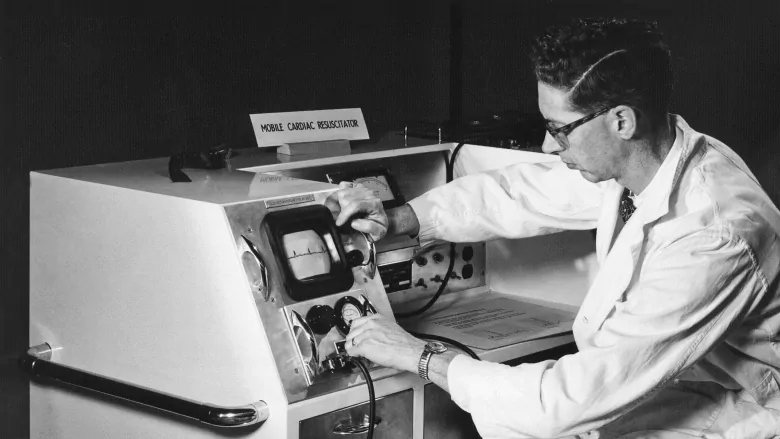
cbc.ca
External Pacemakers
Canadian electrical engineer John Hopps designed and built the very first external pacemaker at Toronto General Hospital. His work was based upon the observations of Wilfred Bigelow and John Callaghan, two cardiothoracic surgeons. This substantial external device used vacuum tube technology that provided pacing for the heart. Patients would feel rather painful shocks to their chests, plus this device also posed a potential hazard of electrocution and inducing ventricular fibrillation. The external pacemaker was powered by using an AC wall socket.
Pacemaker pioneers such as Paul Zoll built smaller but still bulky emergency pacing devices using a large rechargeable battery as the power supply in the 1950s. William L. Weirich published the results of research performed at the University of Minnesota in 1957. These studies showed the restoration of cardiac functions in animal subjects with complete heart blocks through the use of electrodes.
In 1958, Colombian electrical engineer Jorge Pombo and Dr. Vejarano Laverde constructed an external pacemaker, similar to those of Zoll and Hopps. Weighing roughly 45 kg and powered by a 12-volt lead-acid car battery, this device was connected to electrodes that were attached to the heart. This pacemaker was successfully used to sustain a 70-year-old man named Gerardo Florez.
The pivotal point in the history of the pacemaker was the invention of the silicon transistor and its commercial availability in 1956; this event led to the rapid development of practical cardiac pacing.